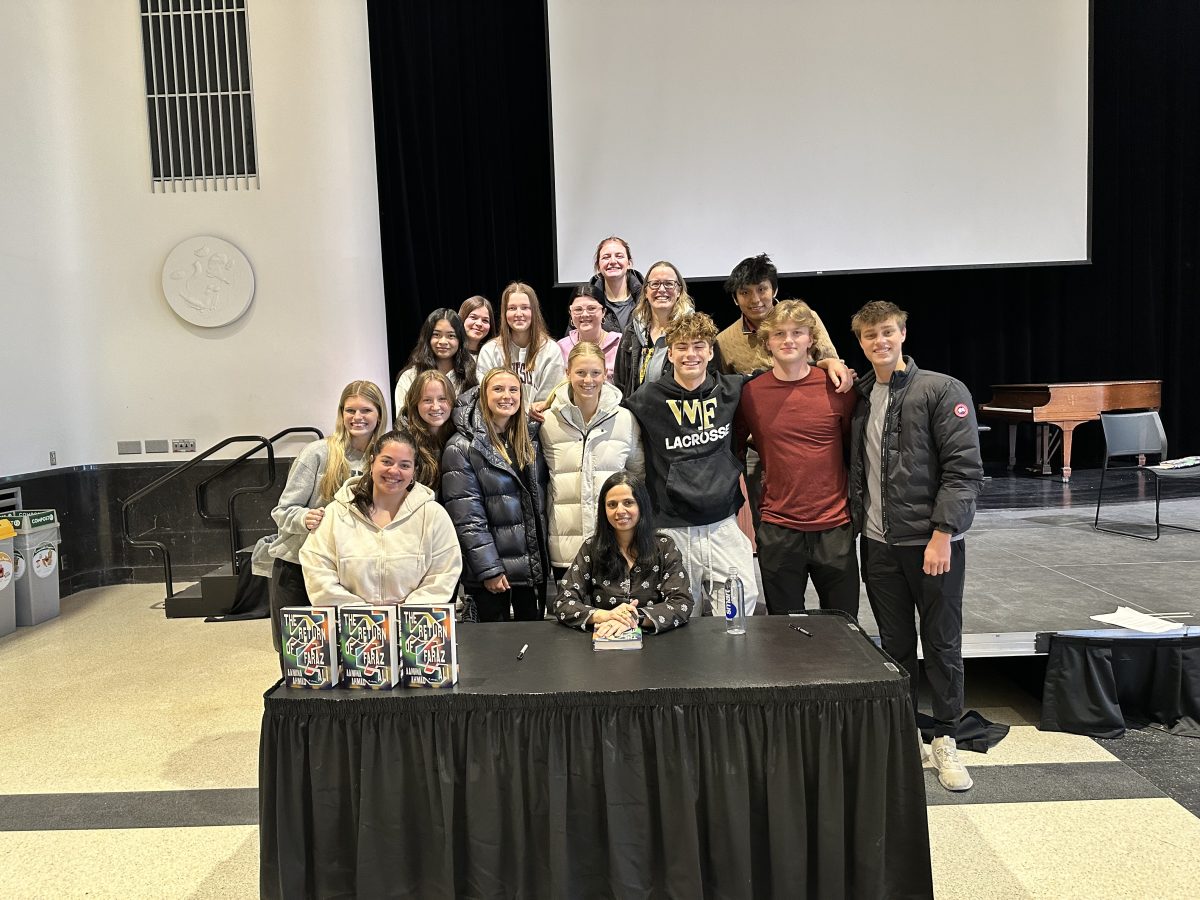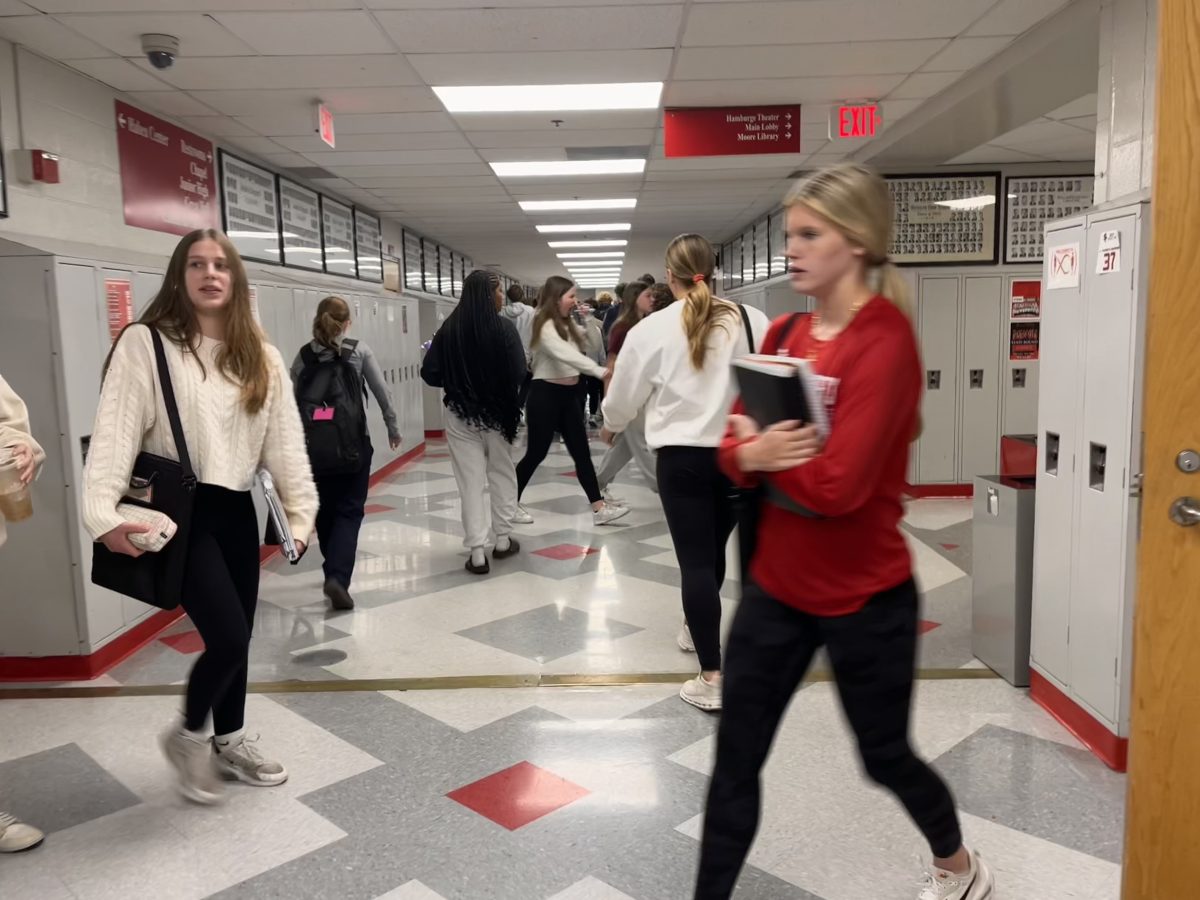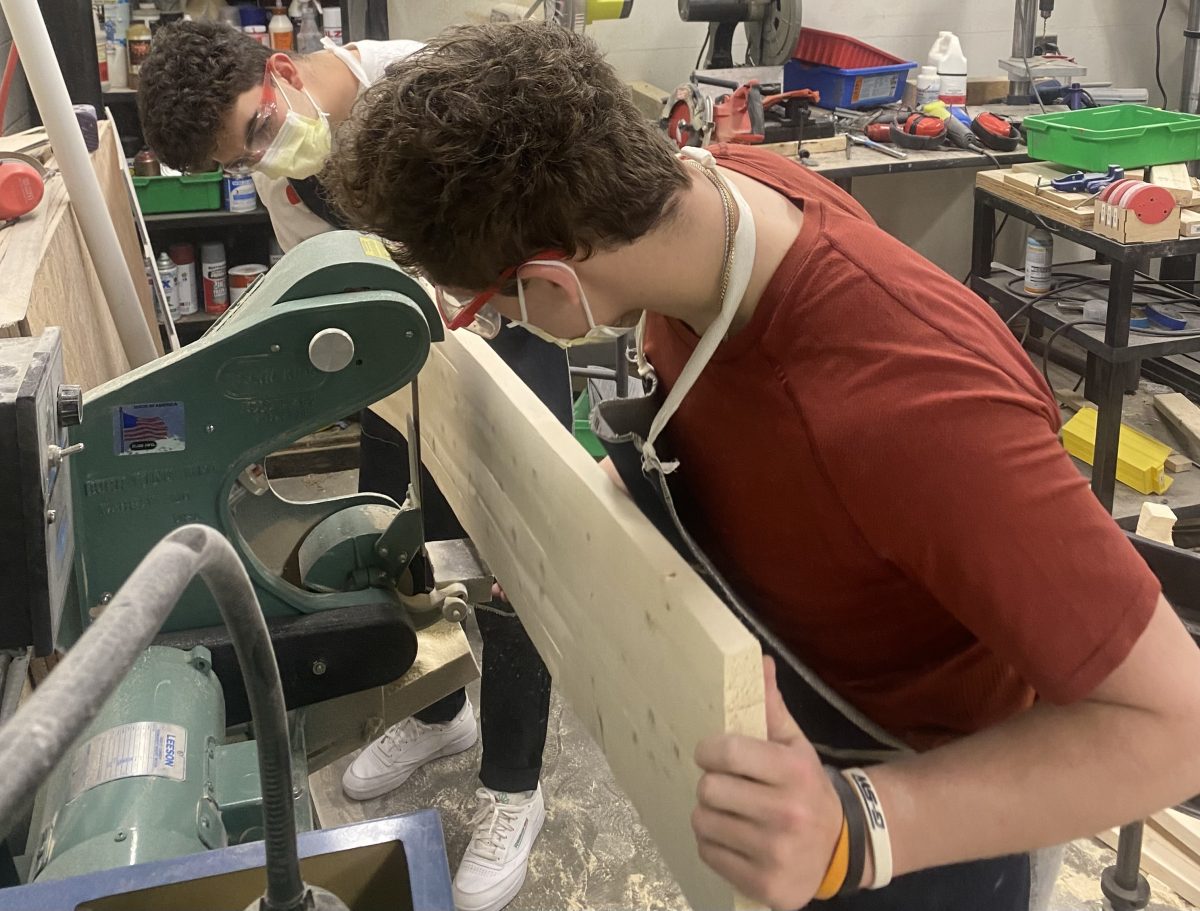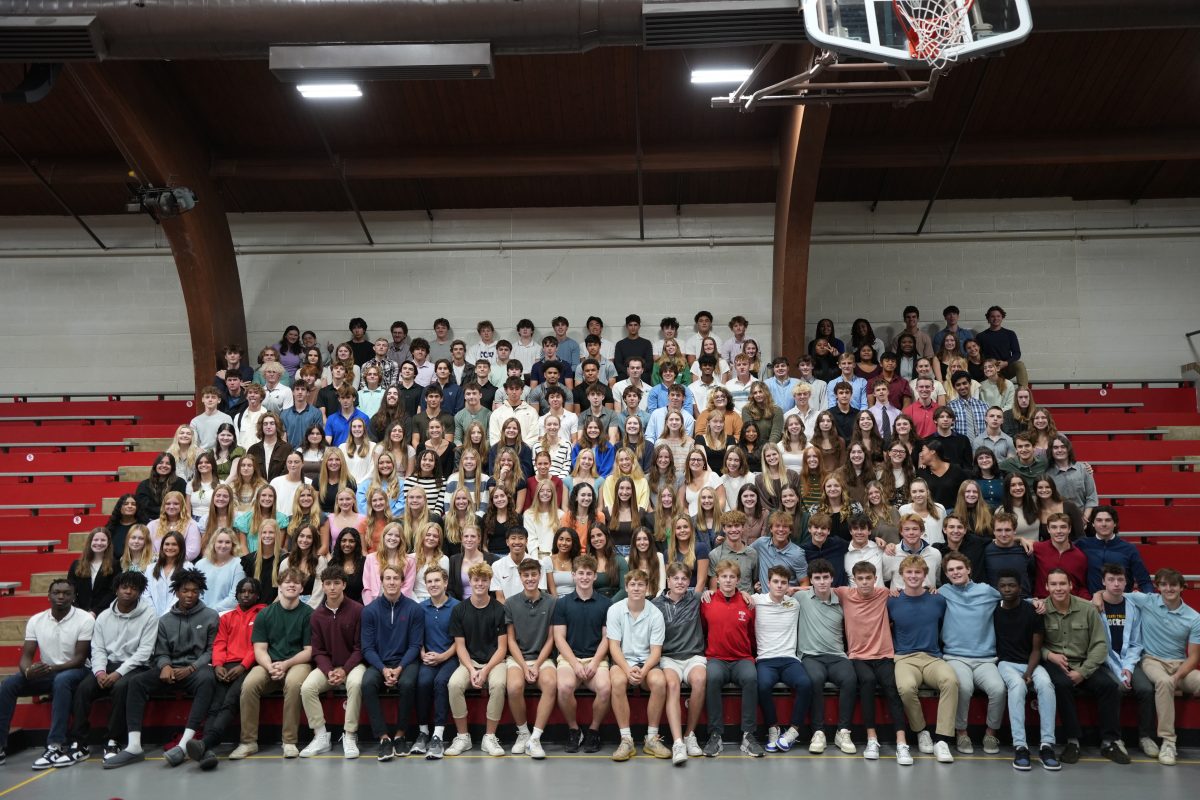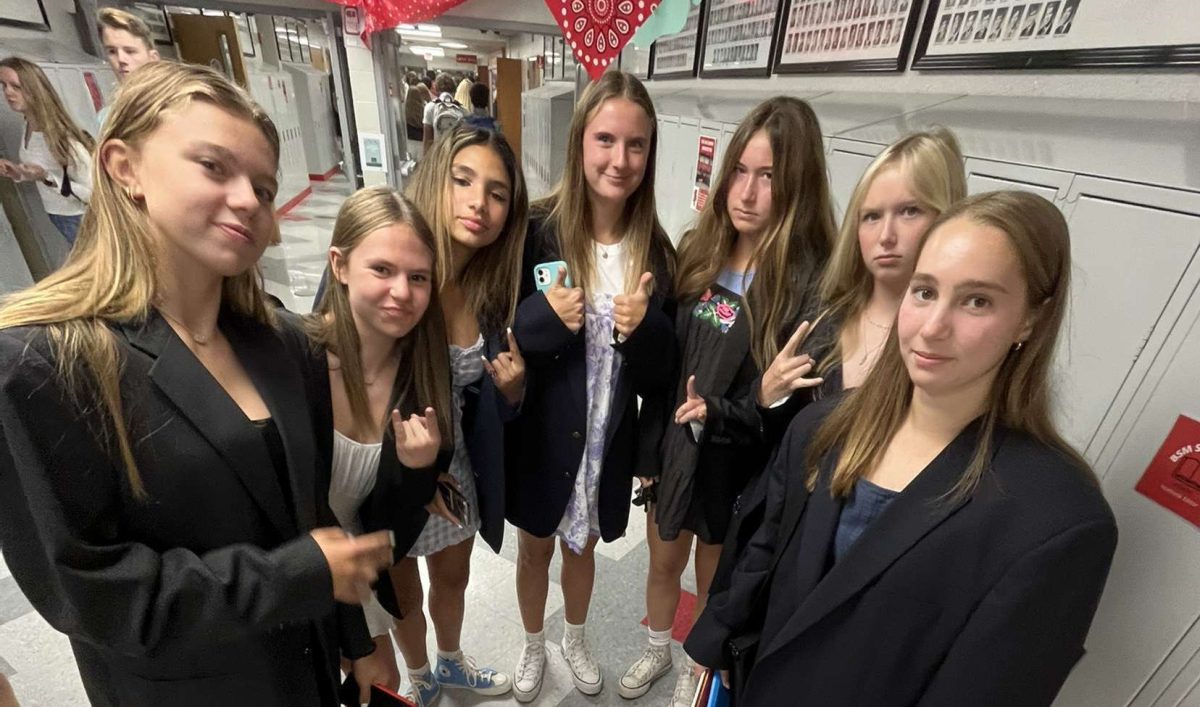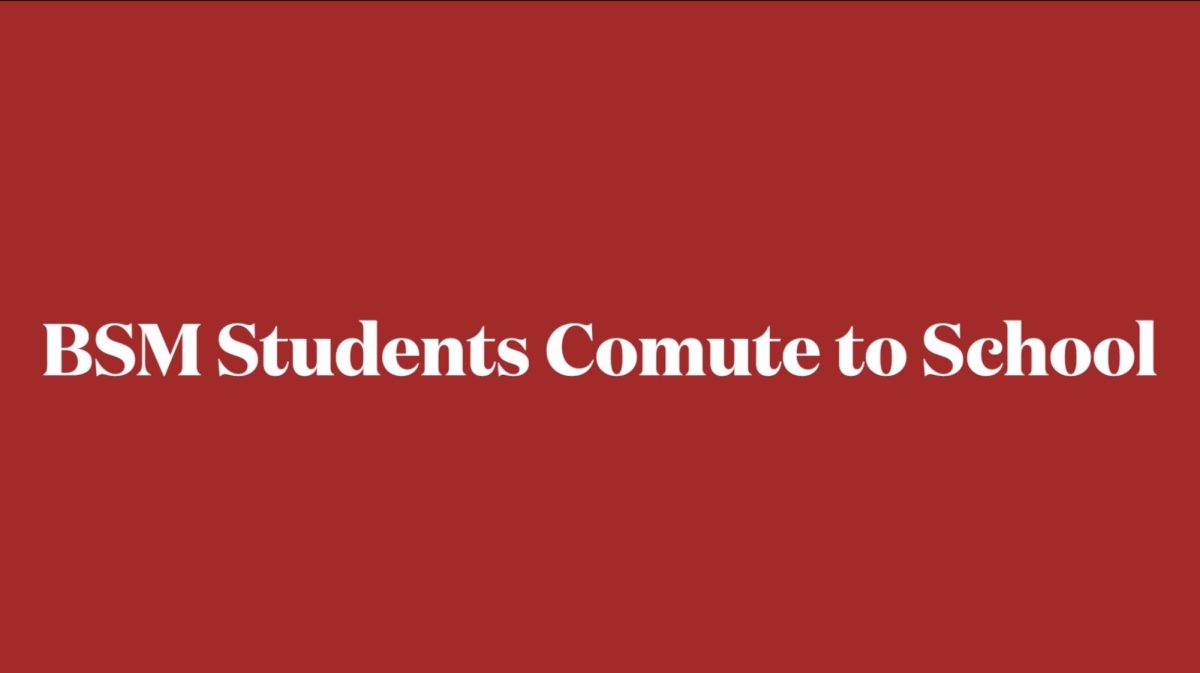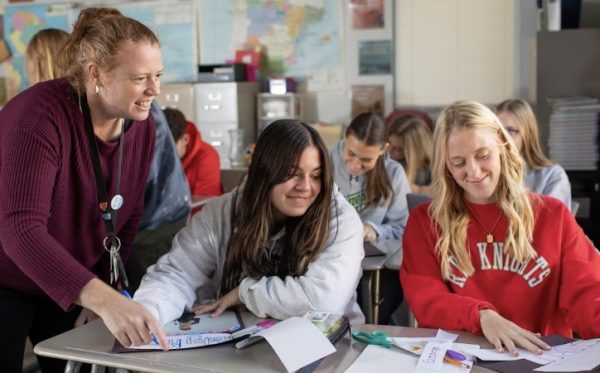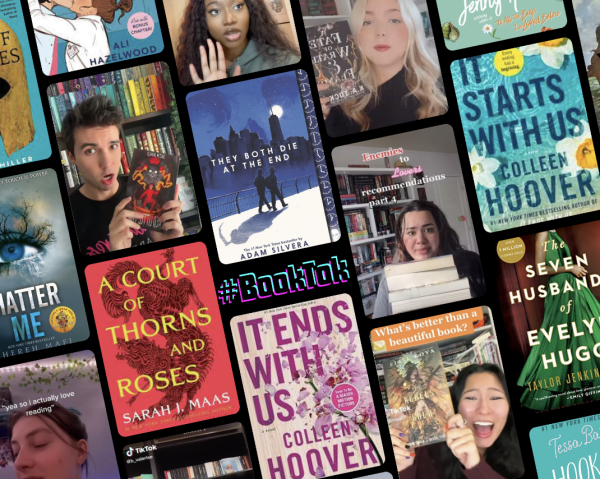The impact technology has in school
This story outlines how technology has impact the school environment and finishes with a look at how different KE editors interact with tech in their own lives.
Students are impacted by technology use of both phones and school-issued laptops in the classroom.
Over the past few years, technology has become a huge part of everyday learning. Whether it’s online textbooks or taking notes on a laptop, technology has become a commonality in many classrooms. The Mac laptop has made multitasking and keeping track of assignments much easier at Benilde-St. Margaret’s. A student can be working on an essay, doing a math assignment, and listening to music all at the same time when using this device. This can be a blessing and a curse.
Dr. Steve Pohlen is the director of learning and technology at BSM and he see the effects of technology in schools. “Just as technology helps students become more efficient, it helps students become more efficient in other things, like distractibility. On the same tool that students do their homework, they can get distracted and go down a rabbit hole for four hours,” Pohlen said.
The MacBook laptop gives access to an endless number of applications to inspire creativity. “When we let students have multiple ways to show what they know, whether it’s through movies, podcasts, presentations, anything through the adobe creative suite, it prepares them to be creative when they leave high school. This is going to be a really important skill going forward because very few jobs don’t require creativity,” Pohlen said.
BSM has even taken the use of technology a step further by having online school, where students can learn their lesson for the day and finish their homework all from the comfort of their own bed when there is a snow day. This means that the school does not have to add days to the end of the year to make up for days lost. Mr. Mark Peterson was even featured on KARE 11 last year for his innovative way of using technology on snow days. Current Seniors, Reilly Rahill, Ava Peterson, and Maggie Murnan and teacher, Mr. Peterson worked on a Biomed II group project together on google hangout. The group was able to talk face to face about their project and not stress about missing a school day. “When you collaborate with other students today, you don’t necessarily have to be together. You can work at 11 p.m., you can work from 100 miles away from each other. You can collaborate and learn anywhere at any time. BSM can do things like online school days where no one has to be together if there is a chance for us to keep learning when the snow falls,” Pohlen said.
Through applications like Google Drive, students can share their work and others can edit or make suggestions. “I really like is the collaborative capabilities of technology if work has to extend beyond class time. It leads to complex essay writing where students can work together and share information.” Vroman said.
I really like is the collaborative capabilities of technology if work has to extend beyond class time. It leads to complex essay writing where students can work together and share information. — Ms. Cherie Vroman
The collaborative capabilities don’t stop within the school of BSM. “Connectivity both in terms of content, connected to all sorts of information, but also connected to all sorts of people and experts. It would not surprise me at all if students are not just getting information from all over the world, but they are also collaborating with students and experts from all over the world,” Pohlen said.
Even though technology may have some adverse effects in the classroom, it has changed the way that teachers teach their students. “It takes the role of the teacher from being sage on the stage from being the guide on the side. In modern education, teachers are now becoming guides to learning. Rather than going up there and telling students what to think,” Pohlen said.
Before the luxury of the internet, people researched in books and collaborating with others to receive their information. This is so rare now that the answers to most questions are at peoples’ fingertips. “It used to be that the only place that you could gain knowledge from were the textbook, the teacher, and maybe you would drive to the library and find some other books,” Pohlen said.
Despite the technological advancements made over the years, some skeptics think laptops and iPads in the classroom could be hindering students’ abilities to problem-solve. Students can easily lose the ability to problem solve when they can’t work out any issue by simply googling it. “The responsibility of educators is going to teach students how to narrow down all of the information that’s coming to you to pick out the most relevant, correct pieces,” Pohlen said.
The responsibility of educators is going to teach students how to narrow down all of the information that’s coming to you to pick out the most relevant, correct pieces.
— Steve Pohlen
The problem-solving process means weighing all options and choosing a solution based on knowledge. Google completely disrupts the process because there is no real learning going on when the answer is given at the click of a button. Because of Google, students are usually less likely to ask their teachers for help and there can be a loss of the student-teacher relationship that is extremely important in most classes. “Teachers are always trying to figure out, how much do I tell students and how much do I tell them and how much do I help them learn how to learn,” Pohlen said.
It’s difficult for there to be a connection between the teacher and students if all the teacher sees is thirty glowing faces staring back at them. Ms. Cherie Vroman, a history teacher at BSM, notices that the first place that students look for answers is their laptop. “The inclination to jump to Google will hurt students in the long run,” Vroman said.
Not only are laptops affecting the connection between students and teachers, but they are also altering the way that notes are taken. Listening to lectures and note-taking is seen as a necessity of active learning. With laptops and IPads becoming more common in the classroom, teachers have approached taking notes in different ways. Some embrace the modernization and have their students type their notes because it is efficient.
Others dislike the thoughtlessness behind typing down words from a textbook. Vroman is confident that handwritten notes are more beneficial than typing them. “Handwritten notes ultimately lead to better notes and better retention because physically writing something means that the student has to comprehend what is in the text before putting it down on paper. Students can type so fast that they tend to type words verbatim from the textbook and can’t think about what they’re doing,” Vroman said.
Further, computers have added yet another distraction for high school students during class. Giving laptops or iPhones to an already restless group of teenagers can be challenging to keep them focused.
Vroman, for example, hardly lets students use their laptops in class. “Students are easily distracted and with the laptop open, it is way too easy to pop over to ESPN to check scores or go on other websites,” Vroman said.
Ironically, a lot of tech executives have these same doubts and therefore send their kids to the private Sacramento Waldorf school in California where they are completely technology-free. CNBC took a look inside this school and learned more about it. Nicole Fields, a teacher at the Waldorf School and strongly believes that a tech-free environment is more beneficial for students. “When I am using a device, it divides me from people who are around me. I find that the community experience of being in a classroom without those devices, that comes only from one-on-one human interaction,” Fields said.
Jessica Stillman from the Inc interviewed Bill Gates who shares similar beliefs. Gates was criticized for having strict rules on technology in their households. This a concerning revelation, considering that he knows exactly how addictive these devices can be.
With an infinite number of apps and websites out there, students have become accustomed to constant stimulation. Electronics become their addiction and they can’t go a day without it.
“We’re in the very early stages of a huge experiment on children. Putting a powerful device in their hands at an early stage in their life without knowing all of the negative and positive effects yet. We owe it to ourselves to figure it out because it’s not like technology is going to go away,” Pohlen said.


